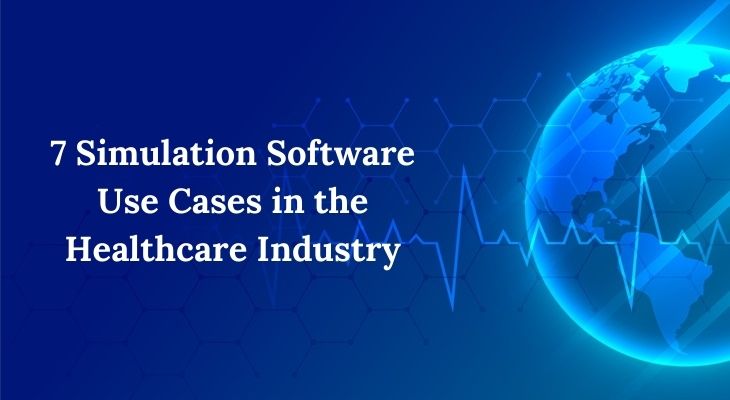What Is Virtual Reality Therapy (VRET)?
VRET is a computer-generated artificial environment. It allows participants to experience their fears and phobias in a controlled context.
The approach can help patients who have trouble imagining situations or are too afraid to experience events in real-time. (e.g., physically leaving the house).
VRET removes the anxiety associated with real-world experience by creating a parallel reality. Various VR systems can customize the experience to the user's reactions.
Those suffering from phobias, anxiety disorders, PTSD, and OCD have found VRET very beneficial.
The Benefits Of VR Therapy To Treat Mental Health
- Beyond standard therapies, VRET provides the following advantages:
- The therapist can personalize the VR content based on the patient's emotions. Thus, treatment programs are adjusted to the needs of patients.
- Patients have some control. Thus, they are not forced into a real-world scenario or forced to picture something that may seem unrealistic or terrifying-having more control over their exposure aids in the development of personalized treatment.
- Drugs are not required.
- It helps the therapist to see what the patient sees in a virtual setting. Thus making it a safe teaching environment for both physicians and patients.
- Reduces the time commitment required to support and monitor patients in real-world settings. It thus lowers the expenses associated with alternative therapies.
- Treatment can be continued at home using virtual reality apps. This encourages patients to stick with their treatment programs.
Is VR Therapy to treat Mental Health Capable Of Becoming A Global Treatment Platform For Mental Illness?
Therapists have utilized Virtual Reality for decades. It is a safe and controlled way to provide virtual reality exposure therapy (VRET). To date, it hasn't been widely available due to cost and technology constraints. With the introduction of mobile VR devices, there is a chance to use telemedicine to decentralize mental health treatment. Thus reaching more people and saving lives all around the world.
There is an absence of clinical evidence and data to support how VR can be utilized to provide successful treatment. This is a major concern in both the clinic and remote access. There is a need to change and impact treatment paradigms. Companies need to perform well-designed, randomized, controlled, and well-powered clinical studies. There will be a rush of VR apps attempting to fix similar mental health challenges in the future.
- What Mental Problems Can VR Therapy To Treat Mental Health Help With?
- There are effective treatments that do not need the use of medicines for many diseases
- Cognitive-behavioral therapy and exposure treatment are two types of psychotherapy
- Treating PTSD using virtual reality
- Treating phobias and anxiety disorders using virtual reality
- Virtual reality for stress relief and meditation
What Mental Problems Can VR Therapy To Treat Mental Health Help With?
There are effective treatments that do not need the use of medicines for many diseases
Some examples include remote teletherapy by qualified practitioners. They use VR as a supplementary tool. In-clinic VR therapy has virtual therapists created using AI or patient-directed VR therapy. These are used in the absence of a professional therapist. It remains to be seen which options can effectively deliver a sustaining treatment. This can also be used by people who want to reduce generalized stress and anxiety in their lives.
Cognitive-behavioral therapy and exposure treatment are two types of psychotherapy
CBT is a psychotherapeutic treatment delivered by a therapist trained in mental health diseases. Patients often attend a short number of sessions focused on a single issue. The goal is to assist the patient in identifying, recognizing, and changing troubling thought patterns and feelings. Anxiety leads to avoidance behavior.
Ex: If a person spends a lot of time worrying about plane disasters and mishaps, they may avoid flying. If they are concerned about how others view them in public, they may avoid social situations. Thus isolating themselves, which can lead to depression and other problems.
CBT is a set of techniques that can be used to overcome these limits. It provides a way to manage one's thoughts and feelings. CBT is used in conjunction with ET. This enables patients to confront their troublesome ideas and fears. This reduces the peak anxiety when they get exposed to whatever is causing the anxiety over time.
Virtual reality can now imitate many of these anxiety-inducing events. Thus, making it a safe, controllable, and effective way to conduct ET and CBT. ET is an exact match for VR. There are many other psychiatric illnesses where VR could play a larger role. VR therapy can also help in childhood developmental disorders and autism.
Treating PTSD using virtual reality
Since the 1990s, virtual reality is employed to give extended exposure therapy for PTSD. This was used mainly for the treatment of soldiers and combat veterans. Bravemind is one such virtual reality system.
The system is made up of several components. It includes a controllable and customizable virtual reality environment. This consists of a vibrotactile platform that simulates explosions and firefights. It also has a scent machine that emits smells like diesel fuel, garbage, and gunpowder for increased immersion. Many clinical studies are being conducted to determine the safety of Bravemind.
Treating phobias and anxiety disorders using virtual reality
VR therapy has long been utilized in clinics to treat phobias and other anxiety problems. There is a large number of individuals who suffer from anxiety disorders. Thus, treatment decentralization via telemedicine or self-guided therapy could have a significant effect.
VRET is as effective as real-life exposure therapy in treating phobias. Below are some instances of companies that use VR to treat anxiety disorders.
The Virtual Reality Medical Center has developed a solution to help those who are frightened of flying. It incorporates software and hardware, airline seats, and a subwoofer system. All the hardware is designed to simulate the sights, sounds, and sensations of flight.
Virtually Better offers software to help people overcome various concerns. These concerns can be flying, heights, public speaking, and thunderstorms. This organization has worked with renowned academic institutions, research and treatment centers. It has conducted research and development initiatives in childhood anxiety and social phobias.
Virtual reality for stress relief and meditation
Whether or not a person has a diagnosable mental illness, we all feel stress and worry at some point in our lives. Meditation is an excellent approach for anybody to lift their spirits and relax. Meditation and relaxation may not be the only treatment for any given ailment. But, its health benefits are beneficial to everyone, healthy or not.
Psious and VirtualRet offer remedies for generalized anxiety and relaxation. DEEP is a unique meditative VR game. In this game, the player explores an artificial underwater world. The game is totally controlled by breathing, which is a unique feature. Correct breathing techniques are essential for meditation and relaxation. The user’s breathing controls the application.
Conclusion
Based on decades of scientific research, the market for enhancing mental health through VR is well established. However, it is still in its early stages. Technology has not yet improved enough to offer widespread VR Therapy access around the world.
In a few years, clinical trials should have a lot more data. This data can be used to evaluate these new therapy approaches in various psychiatric diseases. With further tests and research, VR Therapy will prove to be a breakthrough in treating mental illness.
You may like to read:
Applications of Computer Vision in HealthCare





